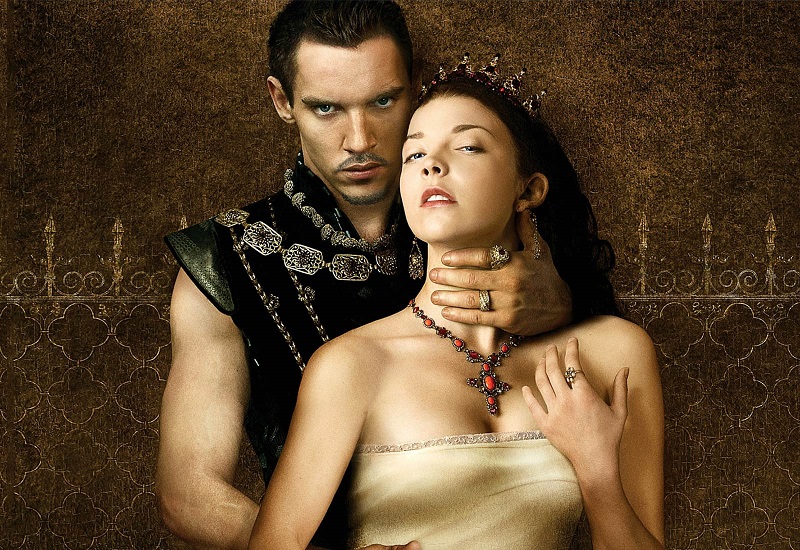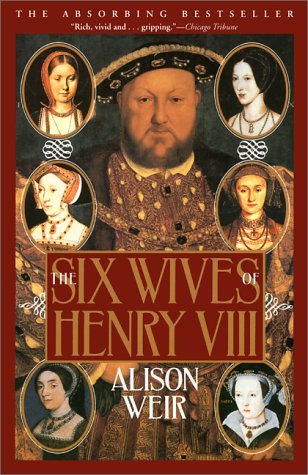The Tudors Then and Now

Inspired by our recent trip to see SIX on Broadway, we’ve been watching The Tudors, the old Showtime network series that ran in the late 2000s. Aileen already watched the show all the way through, but I only saw it previously up to Anne Boleyn’s beheading (oops – spoiler alert). Aileen has DVD box sets of all four seasons, so we didn’t even have to look for the show on streaming services.
At the same time, I have been reading Alison Weir‘s book The Six Wives of Henry VIII, also courtesy of Aileen. It is a very well written history of the King and his marriages. So much of what I’m reading in the book happens in the show, that I wonder if it wasn’t used as a writing source. But of course, there is much that was spoken and done in that time period that is recorded and appears in multiple sources, and that has since become well-known. And there are events on the show that I haven’t read about in the book, so even if this particular book was used, so must other sources have been as well.
The show calls itself The Tudors, but it really is just about Henry VIII and his wives. To me that’s a pity, because I would love to see a TV series that actually covered the entire history of the dynasty. It could start with the Battle of Bosworth Field and Henry Tudor defeating King Richard III, then progress to Henry’s reign and his consolidation of power around the Tudor name. Then it could move on to the reigns of his son, Henry VIII, and subsequently the reigns of all three of Henry VIII’s children: Edward VI and the Protestant reforms, Mary I and her attempt to reverse them, and at last the long reign of Elizabeth I. That would cover the foundation of a dynasty, England’s elevation to a true Renaissance kingdom and the origins of her Imperial destiny, the long and bloody struggle to determine her religious identity, and then finally one of the most glorious periods of her history, featuring victory over the Spanish Empire.
I guess that’s too ambitious for a TV show, so instead Showtime gave us the real juicy part – all the sex and drama in the court of Henry VIII, and surrounding the King’s six marriages. And there’s plenty of sex on this show, too, so much that sometimes it seems like we’re watching soft porn. The characters are cast younger and hotter than they really should be, which must just be the Showtime brand: giving audiences what they crave.
Don’t get me wrong; I like the guy who plays King Henry. I think he does a fine job of capturing Henry’s volatile temperament, which could swing from indignant fury to sweet sentimentality. But it’s undeniable that the actor is too young and too skinny; it would be nice to encounter the fat, balding Henry of the history books. But not on this show; no one wants to see that naked, so we get this inaccurately painted portrait of the man, instead.
Having Weir’s book handy means I can compare all sorts of details in the television show to what really happened (I’m putting faith in Weir’s research, here). When I want to point out either a similarity or a difference, I tell Aileen, “In your book, it actually says…” and she replies, “you know, I didn’t write the book…” – it’s become a running joke between us.
There are always differences because the show does a lot of, shall we say, streamlining in its narrative, and I know this is because it wants to avoid dragging things out, and having too confusing a cast of characters. There are constraints of time and budget. So timelines of events get compressed, and some people do things which historically were done by others.
For example, Henry’s two sisters get combined into one, whose biography becomes a weird mix of the two lives it is based on. At the start of the show, the Dukes of Norfolk and Suffolk are both prominent characters, but at some point Norfolk just disappears. Suddenly Suffolk is doing all this stuff Norfolk did. It hardly matters, since most of it is related to decisions Henry VIII has made.
Other details are just plain wrong. Did you know that Katherine of Aragon was a redhead? That Anne Boleyn wasn’t particularly pretty? That Jane Seymour was a lady-in-waiting in Katherine’s court as well as Anne’s, well before Henry ever noticed her? After watching The Tudors, you still wouldn’t know any of this.
But you would get to enjoy drama and intrigue that captures the spirit of the time, and the gist of what happened during Henry’s reign. You would also see a lot of sumptuous costumes and jewelry (honestly the highlight of the show), much of which matches descriptions I have read in the book. The scenery and interiors are lovely and authentic-seeming as well, though much of it was filmed in Ireland, and the panoramic shots of London are obviously CGI.
The production design and high caliber actors make the show, despite its many historical inaccuracies. As I already wrote, it gives the gist of the history. It’s the Tudor era through the haze of time, distilled down to the important events and the memorable moments and quotes. It’s the familiar story of a King and his six wives, done in steamy Showtime style, and by focusing on the wives, it underscores the point made by the Broadway show SIX: that we remember the man because of his women. After all, even the signature act of Henry’s reign – the break from Rome – was done for want of a wife.
As for all the sex? Well, in that era, sex and politics were inextricably entwined. How could they not be, when the fate of kingdoms and dynasties depended on marriage alliances and the production of heirs? The Queen’s bedchamber was, in a way, a branch of the government. It’s that confluence of passion and power that makes the stories of the King and his Queens such compelling stuff, and has made these historical figures the icons that they are today.
